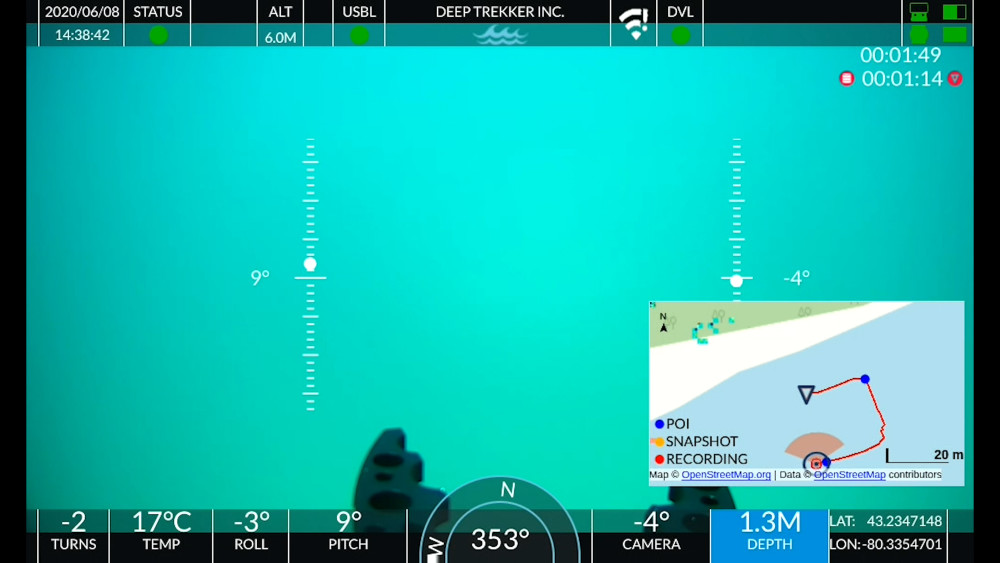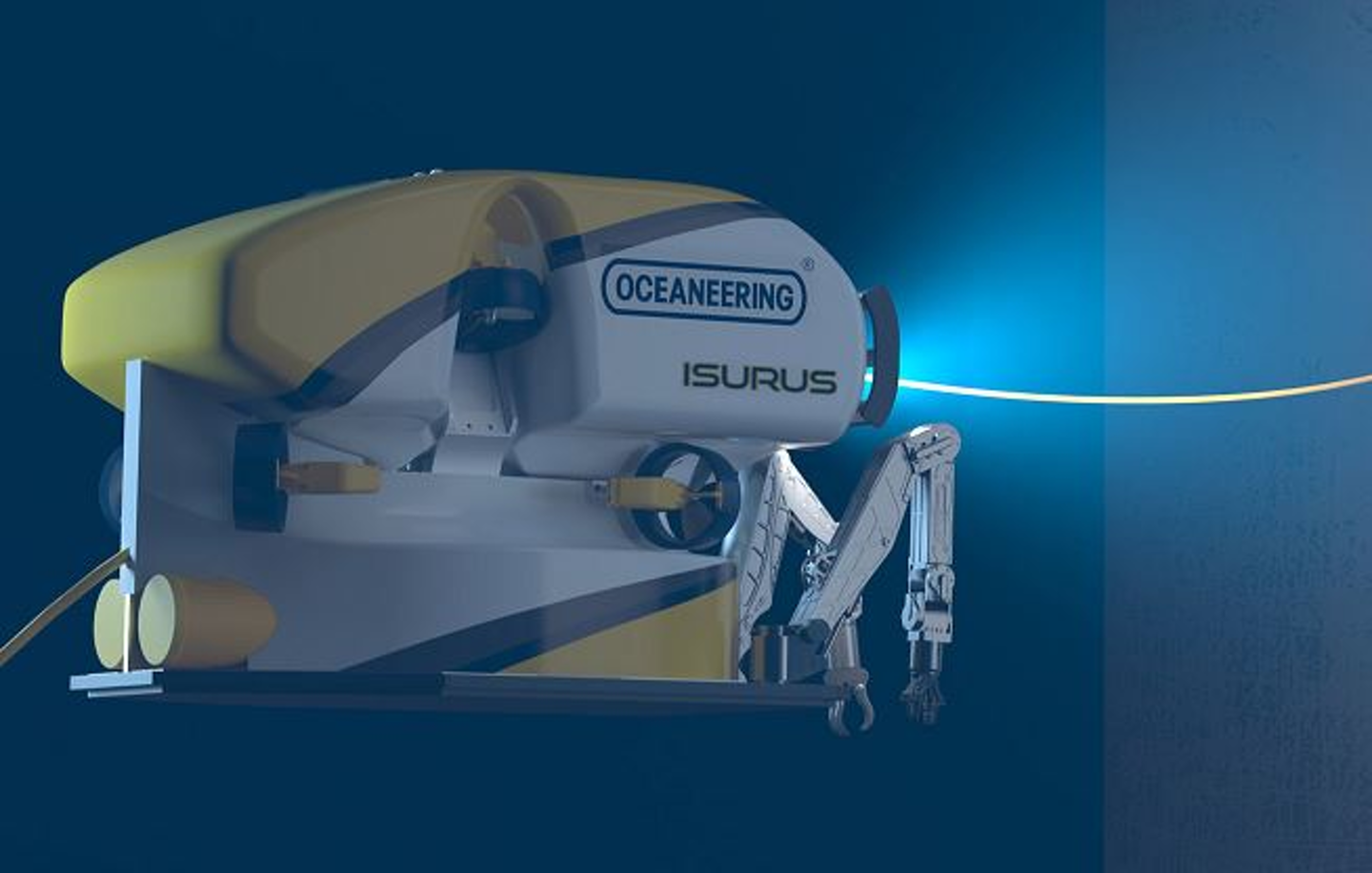Home › Forums › ROV › ROV Technical Discussions › Main Lift Reterms – wires in or out
- This topic has 46 replies, 24 voices, and was last updated 13 years, 11 months ago by
tc1.
-
AuthorPosts
-
December 26, 2009 at 9:15 am #25922
DJansen
ParticipantDeep water systems tend to be triple armour, rotation resistant and fairly stiff high tensile steel. With internal bullet profiles getting slimmer there is no chance to bend back any of the layers. Even if you wanted too. Though it was perhaps an option and popular 15-20 years ago. There is no need and its not part of the design or principle. As noted on any regular socketed wire.
Wirelok doesn’t require adhesion to the internal bullet surface for reterm strength of course. Its the wedge of Wirelok around the wires that takes the load and its the wires that need to cleaned the most. However I would not spray the internal surface of the bullet and would try an limit any Wirelok contamination as much as possible. A spare bullet should be on board for reterms ideally.
Above all, most companies have a procedure, or you should get one sent out. The "I know best" approach were everyone has there own version is a recipe for disaster. Wire assurance and integrity is a major focal point for most companies these days. Those that work for the likes of Shell and BP anyway.
No problem bending triple armour back ( even into the small cartridge type reterm socket ) There may be three layers but the OD of the wire is usually less than the OD of double layer armour..
The reason you clean the inside of the bullet is not to enable the potting to adhere but to prevent oil/grease/lube etc contaminating the wirelok mix.
Retermed a Perry XLS middle of last year and the procedure provided stated that wires should have the ‘gal coating’ sanded off and that the wires should be bent back..
I go with what I know works.. This same discussion ‘bend or not to bend etc was going on 20 odd years ago when I started.. It’s still going on..
The main thing is to do the work step by step in a methodical manner. Completing each process and checking as you go.. A neat, professional approach usually produces good results.. Then a load test will give added reassurance.. Funny back in the day I never saw anybody load test anything out in Asia.. Pot it.. pull on it.. put it over the side…
December 26, 2009 at 10:14 am #25923Anonymous
GuestThen a load test will give added reassurance.. Funny back in the day I never saw anybody load test anything out in Asia.. Pot it.. pull on it.. put it over the side…
Plenty of circumstances when you still have to stick it over the side. No chance for a certified load test when your offshore, a confidence check at most is all you’ll get. If you have been on a construction vessel for exmple and witnessed a 250te or 400te A&R wire being reterminated, you will know it is very rarely load tested after the socket it poured. Load testing is not required when a recognised procedure is followed by competant personnel
Bend back the wire if it says so in the procedure and by all means take the time and effort to bend back the wire, if you feel you know best. However I would stick to what it recommended. Even if that is not what was taught 20 years ago. Keep up with modern principles and practices were possible.
December 26, 2009 at 10:54 am #25924Ray Shields
ParticipantGreat discussion 🙂
16 replies and not a bitch or back stab yet – see? It can be done 😀
December 26, 2009 at 5:04 pm #25925Andy Shiers
ParticipantDepends on the topic , friend 8)
December 27, 2009 at 8:46 am #25926iROV
ParticipantThe reason you clean the inside of the bullet is not to enable the potting to adhere but to prevent oil/grease/lube etc
contaminating the wirelok mix.*WIRELOCK® is not affected by oils, grease or salt water
*Contamination however could cause;
-The cone to not lock-in properly and back-out again .
-The cone to not seat properly (to much friction on the inner wall) and the forces of the wedge will not be distributed evenly on the strands.*It is not necessary to hook wires when resin socketing except in the case of coarse construction wire rope (one layer of wires around each center wire).
-If all the calculations are based on resin-socketed termination of Wire Ropes Don’t you think it’s advisable to bend back the strands on an umbilical as a big part of it comprises out of tether, specially durring Pay loads and launch recover/bad weather snatch loads.
The shrinkage of WIRELOCK® is between 1.5 – 2.0%. In high volume WIRELOCK®, the shrinkage is about 0.5%.
How much are the strands allowed creep into the resin before calling it reterm, would that be 1.5 – 2.0% of the height of the socked?
December 27, 2009 at 11:50 am #25927Anonymous
Guest-If all the calculations are based on resin-socketed termination of Wire Ropes Don’t you think it’s advisable to bend back the strands on an umbilical as a big part of it comprises out of tether, specially durring Pay loads and launch recover/bad weather snatch loads.
Caculations are based on a standard socket sizes for a given wire size. ROV bullets are also designed and calculated and tend to be a greater length/width than the equivalent SWL socket. This gives the nessasary wire coverage. The SWL should be stamped on the bullet, compare this to an equivalent SWL socket from Crosby and the differance is significant.
But again there is no real argument, follow the recommended procedure from your company. If you haven’t got one, highlight this to the management. Dont just do what you feel is best.
December 27, 2009 at 2:38 pm #25928DJansen
ParticipantWIRELOCK® is not affected by oils, grease or salt water
I think that by stating Wirelock is unnafected by salt water, oil etc you mean once it has set and the chemical reaction is complete..
As far as I can see from the literature I have read the bullet and the strands to be potted need to be cleaned and free of water, oil etc or there is a chance this will compromise the pour..
Like has been said before this has been a very long running debate.. And like many things in ROV industry products and equipment is has often been used in a different manner to which it was originally intended.. After all Wirelock is meant to to be used to lock wire rope in sockets.. There is no mention in the literature regarding ROV umbilical term’s or ROV docking bullets.. Most of the procedures we are using have come from experimentation on the part of the ROV designers and the ROV crews.. Hence the differing methods..
All the methods as to how to use the Wirelock product itself seem to agree.. Mix it well, make sure all is clean, don’t heat it with a heat gun etc..
As for the ROV bit.. To bend or not to bend.. To use a tube insert (or not) etc etc is all down to the company’s tech dept, the ROV manufacturers’ input and the ROV guys on site.. From my experience with guys I know and trust who all have a lot of time in the game the way we have been doing it works.. If someone can show me a better way I’m keen to listen but the ‘new’ way needs to have a proven track record and not be some time saving ‘hurry up’ that could be potentially dangerous..
December 27, 2009 at 2:42 pm #25929DJansen
ParticipantHow much are the strands allowed creep into the resin before calling it reterm, would that be 1.5 – 2.0% of the height of the socked?
Most of the time a reterm isn’t called for because of creap in the socket.. The reason for a reterm is usually that several strands of the umbilical have broken ( along the umbilical lenght ) or because there is either a power,insulation or telemetry problem in the umbilical..
Again sounds like you have more experience with wire rope sockets rather than ROV’s
December 27, 2009 at 4:15 pm #25930iROV
ParticipantAgain sounds like you have more experience with wire rope sockets rather than ROV’s
That is cause I can not find the specifications for lifting with an umbilical. 🙂
December 29, 2009 at 8:22 am #25932luckyjim37
ParticipantAfter being involved in an incident last year where the ROV/TMS fell off the main lift (thankfully I was in bed when the mechanical reterm was done) I raised most of the discussions which are going on here. It kind of dawned on me that are the bend back, grease the inside, splay method arguments still going on today due to the fact that the offshore guys who were doing it that way 20 years ago now the guys in the office writing procedures for companies.
The really fun bit of it was the company who made the ROV re-designed the bullet which caused a re-term for us then sent another bullet which caused another re-term and then found the latches were damaging the main lift which caused another re-term.
After about 150 hours operations you can imagine how naffed off we were with 7 re-terms under our belt 5 of which were down to the very conversations going on between the company and manufacturer of the system.
December 29, 2009 at 9:04 am #25933DJansen
ParticipantAfter being involved in an incident last year where the ROV/TMS fell off the main lift (thankfully I was in bed when the mechanical reterm was done) I raised most of the discussions which are going on here. It kind of dawned on me that are the bend back, grease the inside, splay method arguments still going on today due to the fact that the offshore guys who were doing it that way 20 years ago now the guys in the office writing procedures for companies.
The really fun bit of it was the company who made the ROV re-designed the bullet which caused a re-term for us then sent another bullet which caused another re-term and then found the latches were damaging the main lift which caused another re-term.
After about 150 hours operations you can imagine how naffed off we were with 7 re-terms under our belt 5 of which were down to the very conversations going on between the company and manufacturer of the system.
Sounds like a nightmare situation..
Not all the old experienced guys are in the office…. Only the ones who couldn’t fly, fix or disliked getting dirty.. 😆 😆
December 29, 2009 at 1:06 pm #25931Scott Beveridge
ParticipantAfter being involved in an incident last year where the ROV/TMS fell off the main lift (thankfully I was in bed when the mechanical reterm was done) I raised most of the discussions which are going on here. It kind of dawned on me that are the bend back, grease the inside, splay method arguments still going on today due to the fact that the offshore guys who were doing it that way 20 years ago now the guys in the office writing procedures for companies.
The really fun bit of it was the company who made the ROV re-designed the bullet which caused a re-term for us then sent another bullet which caused another re-term and then found the latches were damaging the main lift which caused another re-term.
After about 150 hours operations you can imagine how naffed off we were with 7 re-terms under our belt 5 of which were down to the very conversations going on between the company and manufacturer of the system.
Sounds like a nightmare situation..
Not all the old experienced guys are in the office…. Only the ones who couldn’t fly, fix or disliked getting dirty.. 😆 😆
DJan dude,
I’m disliked (by the orifice turds) but I’m still offshore…..
Jim,
Yep, that was a bit of a beeatch (had many due to bad bullet design)!!! AND there were other manufacturers that had made some farq ups re:terminations…. Not to mention, countless reterms from bad (armored) cable fabrication… Grrrrrrr!!! 😡
Back to topic… check shelf life of Wirelok , ensure good wraps / layers on top of bullet,clean thoroughly, bend every 2nd or 3rd strand, trim dog-ends to ensure NO SHARP ENDS protrude large dia. end of bullet,
pot in good environment / temperature, wait 2 hrs. to move, put back in water after fully cured. If the client whinges about the time factor, tell him it’s a bloody IMCA-guided requirement and an ALL STOP. But better if the company your working for has the procedures lined up as a buffer.May 28, 2010 at 2:25 pm #25934tc1
ParticipantJust for good measure all wire ropes lifting strops shackles ,connectors etc,certainly in the uk sector, must be periodically inspected by a trained rigger/inspector and must be load test certificated to a specific ratio of safety factor.
All wire reterms must be completed by a competant rigger ( certificated )
All reterms and wire changes must be carried out to the manufacturers specification for that particular piece of equipment.
All methods that have worked in the past and I can go back to the early seventies that were outwith spec are subject to a refusal of insurance by for instance lloyds.
There should be as part of a package for any job onshore or offshore a method statement,job safety analysis and risk assessment for any task that is required and that task should be completed by a person or persons competant to do so.
After around 30yrs of using and teaching rigging ,early in the millenium, myself ,and another person with greater experience than myself, put our hands in our pockets and renewed our basic rigging certs to avoid coming against an incident where rigging was involved and people were looking for scapegoats.
All I say is when reterming or slinging something please be aware the shit might stop at you if they deem you not to be competant.
stay safe guys.
I have taken apart many rope ends and sometimes cringe when I see whats there and any safety inspection following an incident would without doubt record any deviations from man.specs.May 28, 2010 at 2:42 pm #25935tc1
ParticipantN.B.
If in doubt,and scotbeve has a good method.
Clean the bullet leaving it dry
Splay the wires tidily layer by layer and clean to dry, I wouldnt bend the ends for two reasons.A. The splayed wires when drawn into the bullit acts as compressing a spring storing outward energy towards the sides of the bullit and when surrounded by compound this energy remains to avoid slip.B When bending the ends you are acheiving nothing except breaking the galv coating and you may just form a corroded area through retained moisture.
If you can draw the splay into the bullit without some mechanical assistance its not splayed enough.
Remember to consider the ambiant temperature around the curing area and allow plenty of time to cure.May 28, 2010 at 3:26 pm #25936Andy Shiers
ParticipantJust as well …………… We are all certified riggers with Re-term qualifications 😆
Never mind 8)
I’m sure one of the "Schools" will make up some kind of qualification that becomes mandatory in the future 🙂
Don’t get me wrong , Certifying for this type of thing can only be for the better 8)
It’s just that , I know the "Schools" would take advantage …………… being the CROWS that they are and charge a ridiculously stupid amount of money for it 😯
More tea anyone 🙄 -
AuthorPosts
- You must be logged in to reply to this topic.



